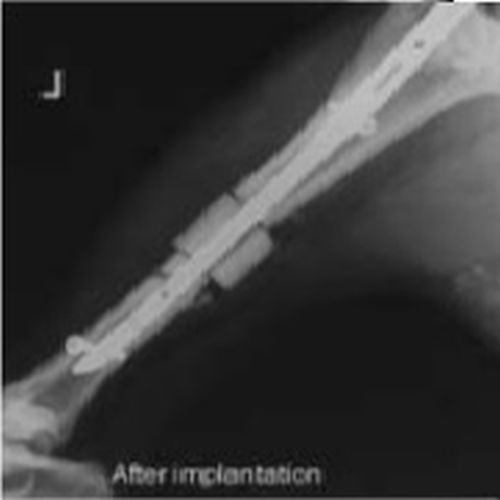In vivo effects of modification of hydroxyapatite/collagen composites with and without chondroitin sulphate on bone remodeling in the sheep tibia.
The addition of chondroitin sulphate (CS) to bone cements with calcium phosphate has lead to an enhancement of bone remodeling and an increase in new bone formation in small animals. The goal of this study was to verify the effect of CS in bone cements in a large animal model simulating a clinically relevant situation of a segmental cortical defect of a critical size on bone-implant interaction and bone remodeling. The influence of adding CS to hydroxyapatite/collagen (HA/Col) composites on host response was assessed in a standard sheep tibia model. A midshaft defect of 3 cm was created in the tibiae of 14 adult female sheep. The defect was filled with a HA/Col cement cylinder in seven animals and with a CS-modified hydroxyapatite/collagen (HA/Col/CS) cement cylinder in seven animals. In all cases the tibia was stabilized with an interlocked universal tibial nail. The animals in each group were analyzed with X-rays, CT scans, histology, immunohistochemistry, and enzymehistochemistry, as well as histomorphometric measurements. The X-ray investigation showed a significantly earlier callus reaction around the HA/Col/CS implants compared to HA/Col alone. The amount of newly formed bone at the end point of the experiment was significantly larger around HA/Col/CS cylinders both in the CT scan and in the histomorphometric analysis. There were still TRAP-positive osteoclasts around the HA/Col implants after 3 months. The number of osteopontin-positive osteoblasts and the direct bone contact were significantly higher around HA/Col/CS implants. We conclude that addition of CS enhances bone remodeling and new bone formation around HA/Col composites.

- J. Orthop. Res. 2009 Jan;27(1):15-21
- 2009
- Medical Biology
- 18634066
- PubMed
Enabled by:
